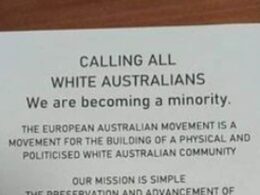As Vice President Kamala Harris gains an edge over former President Donald Trump in several recent national and swing state polls, Fox News Sunday host Shannon Bream questioned Republican vice-presidential candidate JD Vance on how the campaign plans to address these numbers.
Bream cited several polls to Vance that bode well for Harris, including a New York Times/Siena College poll released on Saturday that showed Harris, the presumptive Democratic nominee, leading Trump in several battleground states.
The host asked Vance about how the campaign is responding to recent polling data, highlighting that “these are critical states that got to have a path to 270.”
To become president, a candidate must secure 270 Electoral College votes. Battleground states play a key role in the presidential race, and polls from these states are often considered more telling than national averages, as the popular vote does not guarantee the White House.
The poll, conducted among 2,670 likely voters from August 8 through 15, found Harris leading Trump in North Carolina, a battleground state Trump won twice in past elections, 49 to 47 percent.
Along with North Carolina, the poll found that Harris leads in Arizona with 50 percent versus Trump’s 45 percent. However, Trump continues to lead in Georgia with 50 percent and Harris at 46 percent and narrowly leads in Nevada with 48 percent versus the vice president’s 47 percent. The poll has margin of error of plus or minus 2.1 percentage points.
“Are there any pivots? Are there any reconfiguring of what you’re doing and the strategy? Because you talk about your message, but is it not landing,” Bream asked Vance on Sunday.
The Ohio senator replied: “First of all, the polls tend to radically overstate Democrats. We certainly saw that during the polling of summer of 2020 and summer of 2016, and of course a lot of those polls were wrong when we came to Election Day.” He didn’t offer any insight into potential campaign changes.
Newsweek has reached out to Vance’s press team and Harris’ campaign for comment via email on Sunday.
Vance’s comments echo the Trump campaign’s press memo in response to the Times/Siena College poll, which said its “once again, a perfect example of how wildly inaccurate recalled 2020 vote between President Trump and Joe Biden is being used to create a phony lead for Kamala Harris.”
Vance added on Sunday that Harris “got a bit of a sugar high a couple of weeks ago,” but then argued that internal data shows she “has already leveled off.” Vance did not reveal details of the internal data.
He continued: “If you talk to insiders in Kamala Harris’ campaign, they’re very worried about where they are,” noting that inflation and the economy are key issues for voters this election and Americans “just don’t buy the idea that Kamala Harris, whose been vice president for three-and-a-half years, is somehow going to tackle the inflation crisis in a way tomorrow that she hasn’t in the past 1,300 days.”
Bream pressed Vance again, saying that it doesn’t “line up” with newer polls, such as a recent Washington Post/ABC News/Ipsos survey that puts Harris ahead of Trump in the national race by 4 percentage points.
“Those are new numbers,” she said. “If you think the momentum is not swinging or your internal polls are suggesting differently, every other poll that has been released is showing great momentum in her direction.”
The Washington Post/ABC News/Ipsos poll of 2,336 U.S. adults, including 1,975 registered voters, was conducted online between August 9 and 13. It found that among registered voters, 49 percent would vote for Harris and 45 percent would vote for Trump. The poll has a margin of error of plus or minus two percentage points.
Vance replied: “There are a lot of polls that actually show her stagnating and leveling off. Of course, ABC/Washington Post was a wildly inaccurate pollster in the summer of 2020. If you see the numbers that we’re seeing and you actually talk to the American people, I feel extremely confident that we’re going to be in the right place in November.”
Vance didn’t provide insight into whether internal polls suggest Trump has a significant lead over Harris. He also didn’t cite which polls he was referring to.
The senator added: “Consistently what you’ve seen in 2016 and 2020 is that the media uses fake polls to drive down Republican turnout and to create dissension and conflict with Republican voters.”
Each poll has a margin of error, which should be considered when interpreting the results. National polling averages combine results from many polls and are updated regularly as new data comes in.







